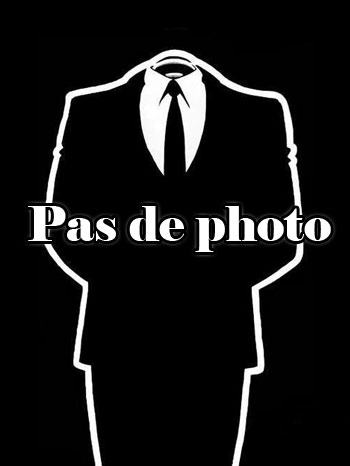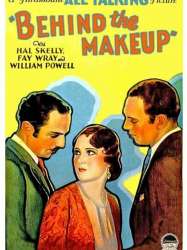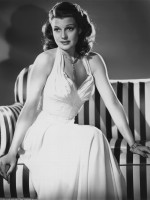Hal Skelly est un Acteur Américain né le 31 mai 1891 à Alleghenyville (Etats-Unis)

Hal Skelly (May 31, 1891– June 16, 1934) was an American Broadway and film actor.
Skelly became a veteran of medicine shows, musical comedy, burlesque, Lew Dockstader's minstrels and opera. He joined the A.M. Zinn musical comedy company in San Francisco where his eccentric dancing ability earned him the nickname "Tumbling Harold Skelly". Always enamored with the circus, he spent a year with Barnum & Bailey. Skelly toured China and Japan with a musical comedy troupe, the Raymond Teale Company.
Skelly made his Broadway debut in Fiddler’s Three (1918) and went on to appear in ten other shows on Broadway. In 1927, he played a starring role alongside Barbara Stanwyck, in her first Broadway hit, the musical production "Burlesque". Paramount Pictures invited the two to star in the 1929 talkie film version of the show, retitled The Dance of Life because studio executives claimed the original title too risqué, but surely these veteran showmen were well aware that the term "dance of life" was burlesque slang meaning 'fornication'. Stanwyck turned down the offer, while Skelly reprised his role as charismatic drunk 'Skid' Johnson. Skelly made a total of ten films, including the Woman Trap (1929), Behind the Make-Up (1930), and The Shadow Laughs (1933). He was also featured on two movie soundtracks.
Source : Wikidata
Hal Skelly

- Infos
- Photos
- Meilleurs films
- Famille
- Personnages
- Récompenses
Nationalité Etats-Unis
Naissance 31 mai 1891 à Alleghenyville (Etats-Unis)
Mort 16 juin 1934 (à 43 ans) à Cornwall (Etats-Unis)
Naissance 31 mai 1891 à Alleghenyville (Etats-Unis)
Mort 16 juin 1934 (à 43 ans) à Cornwall (Etats-Unis)
Biographie
He was born James Harold Skelley in Alleghenyville, Pennsylvania to James and Martha Skelley. His family moved to Davenport, Iowa when he was four. He had four sisters and three brothers. Skelley was educated at Sacred Heart School in Davenport and St. Bede Academy in Peru, Illinois. He left home at the age of 15 and joined the circus. He acted in his first stage production, The Time, the Place and the Girl, at the LaSalle Theater in Chicago when he was 16. For a short period of time he was a backup first baseman for the Boston Braves and a prizefight manager. For his professional name he shortened his middle name Harold to Hal and dropped the final "e" in Skelley.Skelly became a veteran of medicine shows, musical comedy, burlesque, Lew Dockstader's minstrels and opera. He joined the A.M. Zinn musical comedy company in San Francisco where his eccentric dancing ability earned him the nickname "Tumbling Harold Skelly". Always enamored with the circus, he spent a year with Barnum & Bailey. Skelly toured China and Japan with a musical comedy troupe, the Raymond Teale Company.
Skelly made his Broadway debut in Fiddler’s Three (1918) and went on to appear in ten other shows on Broadway. In 1927, he played a starring role alongside Barbara Stanwyck, in her first Broadway hit, the musical production "Burlesque". Paramount Pictures invited the two to star in the 1929 talkie film version of the show, retitled The Dance of Life because studio executives claimed the original title too risqué, but surely these veteran showmen were well aware that the term "dance of life" was burlesque slang meaning 'fornication'. Stanwyck turned down the offer, while Skelly reprised his role as charismatic drunk 'Skid' Johnson. Skelly made a total of ten films, including the Woman Trap (1929), Behind the Make-Up (1930), and The Shadow Laughs (1933). He was also featured on two movie soundtracks.
Le plus souvent avec
Filmographie de Hal Skelly (7 films)
Acteur

The Shadow Laughs (1933)
, 1h7Réalisé par Arthur Hoerl
Origine Etats-Unis
Genres Comédie
Acteurs Hal Skelly, Rose Hobart, Harry T. Morey, Robert Keith, Cesar Romero
Rôle Robin Dale
Note43%






L'Assommoir (1931)
, 1h33Réalisé par D. W. Griffith
Origine Etats-Unis
Genres Drame
Thèmes Alcoolisme, Maladie, Psychotrope
Acteurs Hal Skelly, Zita Johann, Charles Richman, Helen Mack, Claude Cooper, Kate Bruce
Rôle Jimmie Wilson
Note60%





A young couple's marriage is threatened by the husband's alcoholism.

Sous le maquillage (1930)
Réalisé par Dorothy Arzner
Origine Etats-Unis
Genres Drame
Acteurs Hal Skelly, William Powell, Fay Wray, Kay Francis, E. H. Calvert, Paul Lukas
Rôle Hap Brown
Note58%





Gardoni, a down-on-his-luck vaudeville performer, is taken in by a fellow performer, a clown who has a bicycle riding act. Gardoni shows his appreciation by stealing the clown's act and his girlfriend, whom he marries.

Men Are Like That (1930)
, 59minutesRéalisé par Frank Tuttle
Origine Etats-Unis
Genres Drame, Comédie
Acteurs Hal Skelly, Doris Hill, Clara Blandick, Charles Sellon, Helene Chadwick, Morgan Farley
Rôle J. Aubrey Piper
Note47%






The Dance of Life (1929)
, 1h55Réalisé par John Cromwell, A. Edward Sutherland
Origine Etats-Unis
Genres Drame, Musical, Romance
Thèmes Musique
Acteurs Hal Skelly, Buddy Rogers, Nancy Carroll, Dorothy Revier, Al St. John, May Boley
Rôle Ralph 'Skid' Johnson
Note67%





Burlesque comic Ralph 'Skid' Johnson (Skelly), and dancer Bonny Lee King (Carroll), end up together on a cold, rainy night at a train station, when he's thrown out and she's rejected from the same show.

Woman Trap (1929)
, 1h22Réalisé par William A. Wellman, Charles Barton
Origine Etats-Unis
Genres Policier
Acteurs Evelyn Brent, Hal Skelly, Chester Morris, William B. Davidson, Effie Ellsler, Guy Oliver
Rôle Dan Malone
Note53%






The Dancing Town (1928)
, 20minutesOrigine Etats-Unis
Genres Drame
Acteurs Humphrey Bogart, Helen Hayes, Hal Skelly, Harry Beresford, Elizabeth Patterson, Jefferson De Angelis
Rôle Tom Kinch
Note69%





 Connexion
Connexion



